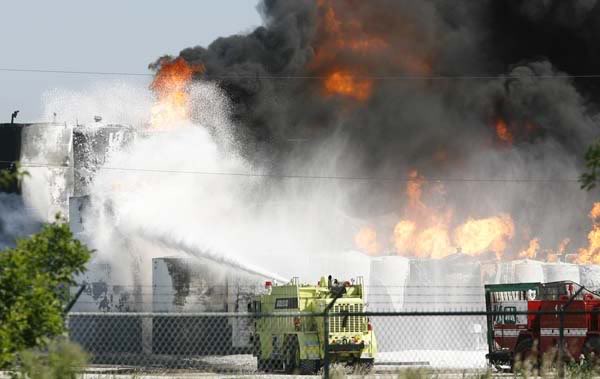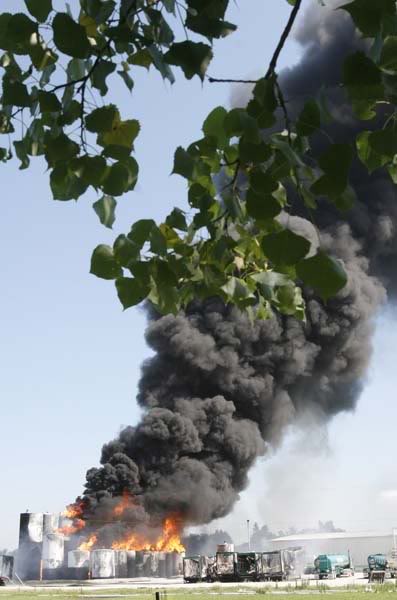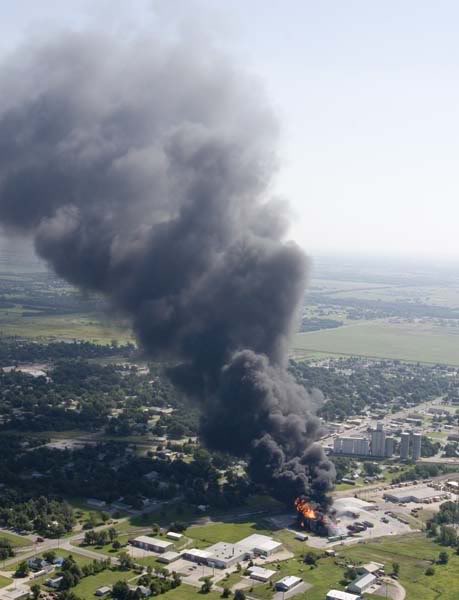Sparky-Watts
Banned
I was just finishing up a job in Derby this morning around 9am when I heard what sounded like distant thunder. As I drove out onto the highway to head north to Wichita, I could see the smoke plume over Valley Center, where the Barton Solvents Plant had just blown up. Barton Solvents makes BarSol, among other things, a solvent used pretty much all over the US in many different businesses from auto repair to aircraft painting to machine shops to common paint thinner. Mind you, Derby is 20 miles south of Valley Center as the crow flies, and I heard the initial explosion quite clearly. Witnesses around the plant said the first blast blew a tank the size of a semi trailer 200-300 feet in the air, where it exploded again. Within minutes there were dozens more smaller explosions as other containers that size and smaller in the "tank farm" burst. It's still burning, 12 hours later. Here are some pics of the scene:
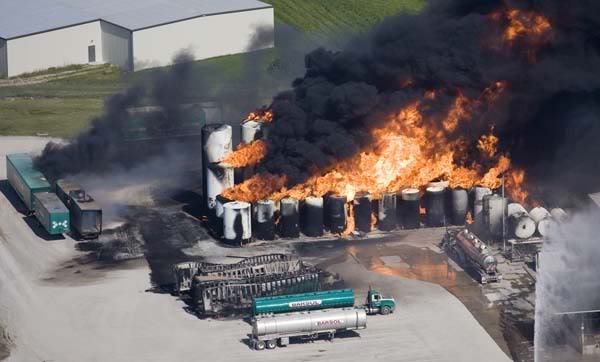
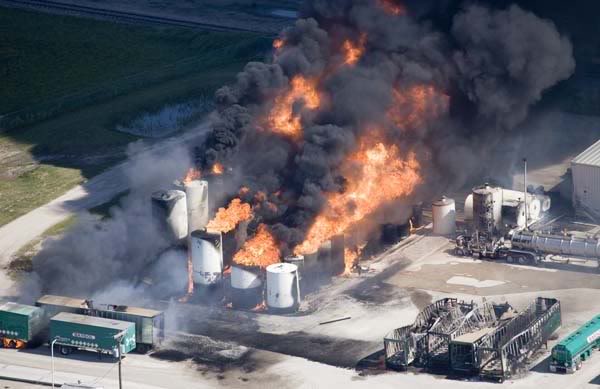
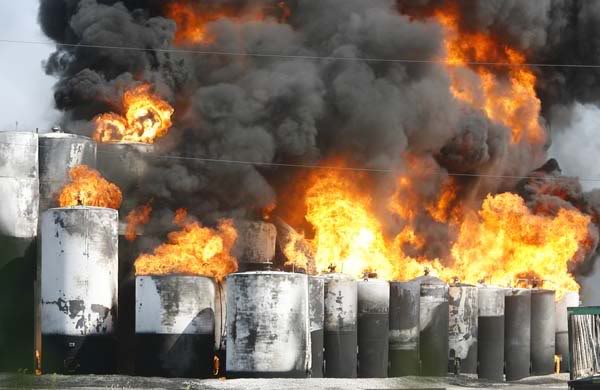
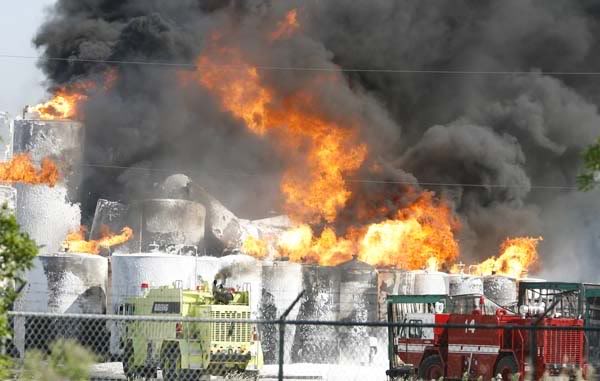
Surprisingly, nobody was killed or even injured in the initial explosions, although later on there were several people treated at local hospitals for symptoms from exposure to the toxic smoke, mostly irritated eyes, noses, throats, and lungs, but nothing serious.
In the first two pictures at the right side, you can see a tanker truck with the cab burned to the ground. The driver was standing behind that truck filling it with chemicals when the place exploded. He lives a few blocks away, so he drove home, took a shower and changed clothes, then drove himself to the hospital where Sunshine works and checked in because his eyes, nose and skin were irritated from the fumes and smoke! :shock: Incredibly, he had no burns or other injuries from the blast itself!




Surprisingly, nobody was killed or even injured in the initial explosions, although later on there were several people treated at local hospitals for symptoms from exposure to the toxic smoke, mostly irritated eyes, noses, throats, and lungs, but nothing serious.
In the first two pictures at the right side, you can see a tanker truck with the cab burned to the ground. The driver was standing behind that truck filling it with chemicals when the place exploded. He lives a few blocks away, so he drove home, took a shower and changed clothes, then drove himself to the hospital where Sunshine works and checked in because his eyes, nose and skin were irritated from the fumes and smoke! :shock: Incredibly, he had no burns or other injuries from the blast itself!

